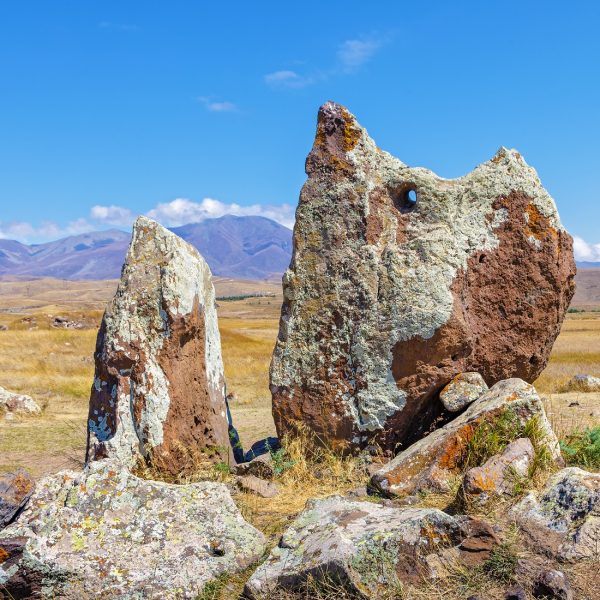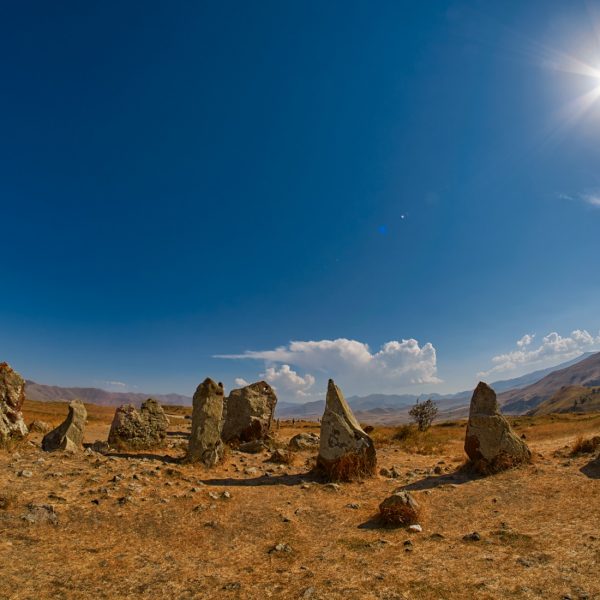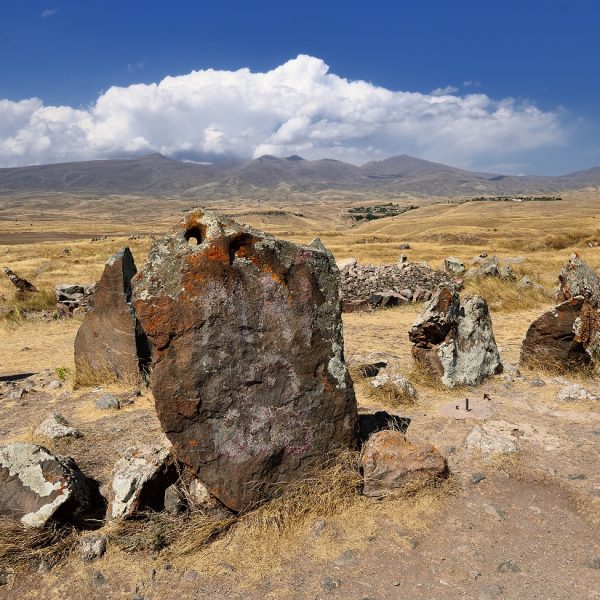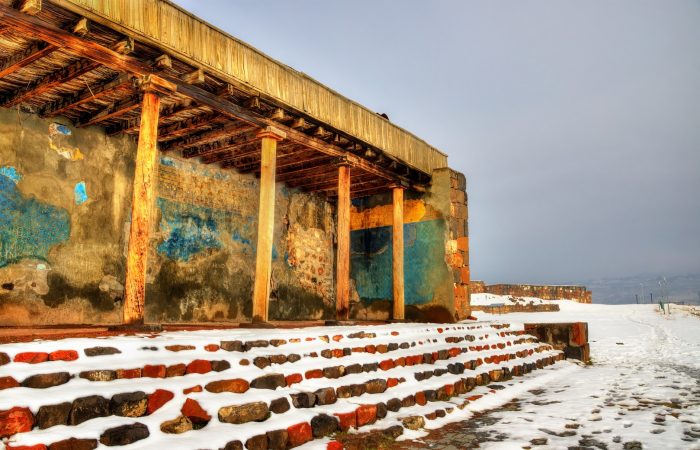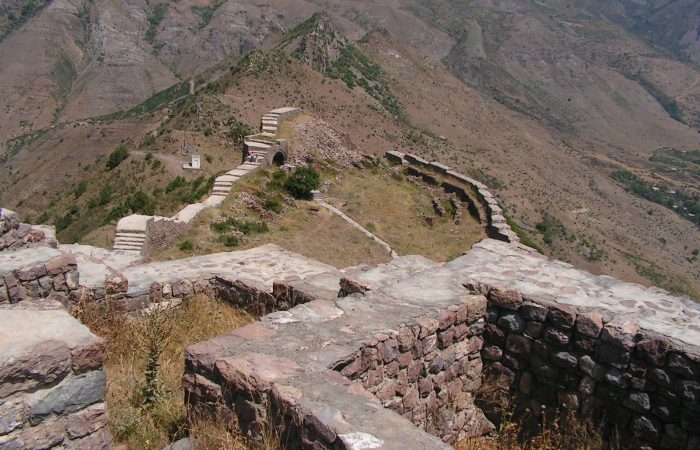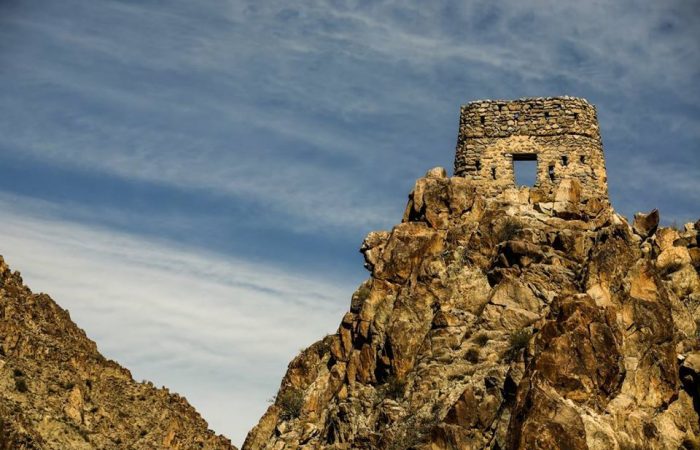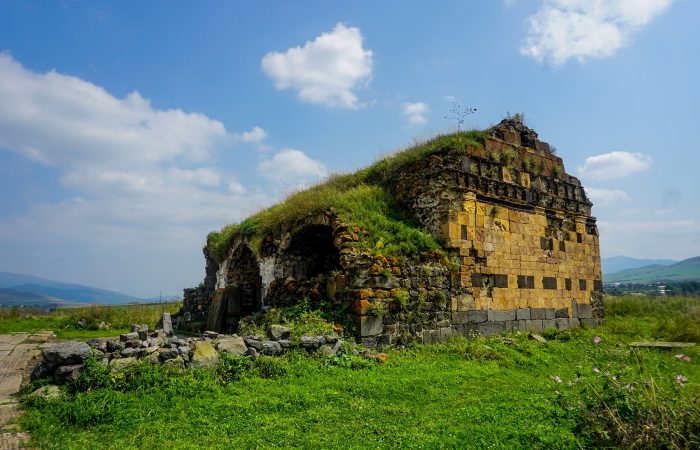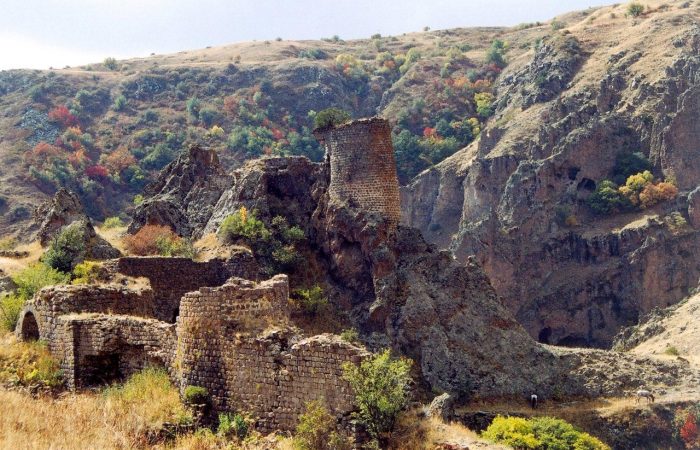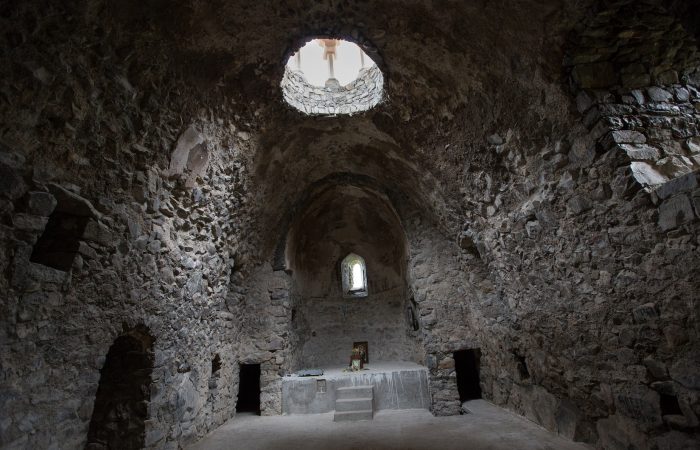Karahunj: Location
Karahunj is located in Syunik Province, near the cities of Sisian and Goris. It will take around three hours to get there from capital Yerevan.
Karahunj: General and the Riddle
Also known as Zorats Stones (Stone Army) Karahunj is a huge complex comprised of Bronze Age tremendous and unique megalithic structures, more specifically tombs, and over 220 menhirs (menhirs are large upright standing stones). In 2004 the government of Armenia passed a decision upon which the archaeological site was officially named Karahunj Observatory.
Up to now no mutual agreement has been reached regarding Karahunj’s dating and significance. Karahunj is believed to have a history of 7500 years. In any case, it’s an indisputable fact that the complex with its structure is very similar to the monuments found in Iceland, Ireland, Scotland, France and so on. The most popular of them is the Stonehenge in Britain. Many historians believe there is a connection between the Armenian and British Monuments. And one very important thing to note is the relative dating of both monuments – as already said, the Armenian Karahunj dates to 7500 years, while the British Stonehenge has a history of only 4000 years.
Other than that, the study of the roots of the word Stonehenge doesn’t take to anywhere, since the meaning of “stone” is clear to everyone, while what does “henge” mean? In this regard, it should be said, that in the word Karahunj “kar” means stone, while “hunj” is believed to be the replaced variant of “punj,” which means “a bunch.” In this context, Karahunj means “a bunch of stones” in Armenian.
Karahunj: Complex
The site covers an area of 7 hectares. The tombs are to the west, while to the east the menhirs forming a circle (oval) with rows or “alleys” of stones stretching to the north, east and west can be seen. There is a huge cist grave to the west of the central circle of the menhirs. The 223 standing and lying stones of 250 meters cross the circle, while over 200 cist graves lie to the west of the central oval. Those standing and lying stones are grouped into Central Ring, Chord, Central Alley, North Arm, South Arm and Northeast Alley.
Many of the stones contain holes with the diameter of 4-5 centimeters. The angles of those holes have different points. They are particularly pointed to the horizon and outer space.
Karahunj: Excavations and Astronomy
Since the excavations held at the site in 1980, Karahunj has always been in the spotlight. During those excavations megalithic and Bronze Age structures were uncovered. While prior to that the site was not of much interest, despite the fact that the site was believed to cure of infertility.
Many historians share the opinion that Karahunj was a site of worship. The excavations of 1980 were headed by Doctor of Historical Sciences Onik Khnkikyan, who refused the assumption that the complex was constructed in the first millennium BC, or that the menhirs bore decorative meaning and only. Khnkikyan also mentioned that the stones stand in a way that as you look through the holes you see they are directed at certain parts of the sky.
Why were those stones placed exactly where they are today? This is another question scientists do their best to give an answer to. According to archaeologists, they were placed around the tombs and had a ceremonial meaning. It is also assumed that the holes on the upper part of the menhirs were made to facilitate the moving and placing of the stones. But this assumption doesn’t sound real considering the fact that those holes were made on the weakest parts of the stones, so they could easily break. On the other hand, the holes can be seen only on the stones, which face the night sky. Another not less important question is why those holes were made with such carefulness and attention.
The first astronomical study of Karahunj was conducted in 1983 by astrophysicist Elma Parsamyan. The next study was held in 1987 by Elma Parsamyan and Aleksander Barseghyan. The scientists primarily worked at the night hours, and they came to the conclusion that the complex was used to study the night sky.
Elma Parsamyan paid much attention to the layout of the complex as well as the number and the distribution of the stones. She concluded that the menhirs were astronomical tools. They discovered “eye holes” on 84 of the menhirs.
Of interest are the studies conducted by Paris Herouni, who was an Armenian scientist specialized in radio-physics, radio engineering and radio-astronomy. According to him, Karahunj has a history of 7500 years. Though Paris used to bring forth a number of explanations and arguments supporitng and proving his statement, his conclusion is still a matter of dispute.
Karahunj: Stone Ages
Some archaeologists believe that the stones and the graces date to the same period, while others think that they date to different periods with the stones preceding the graves. The findings in the graves date to the early Bronze Age, while the graves either to early or middle Bronze Ages (2000-1800 BC).
The key stone of the complex is believed to date to an even earlier period. Stone Number 137 is believed to have a carved periscope on it and to be used to observe the stars right above the complex.
As already said, it is assumed that the complex was built 7500 years ago, which causes varying opinions and disagreements. Many scientists say that the various earthquakes and disasters have caused to move the stones, so it’s almost impossible to know which stars were being observed and by which stones.
Lastly, the naming of Karahunj is also explained by “kar” meaning stone and hunj meaning “voice, sound, eco” in Armenian. Note that the first naming given to Karahunj is thought to be “Ghoshun Dash,” which means “stone army” translated from Turkish. A legend has it that at a distance the stones used to resemble an army.

